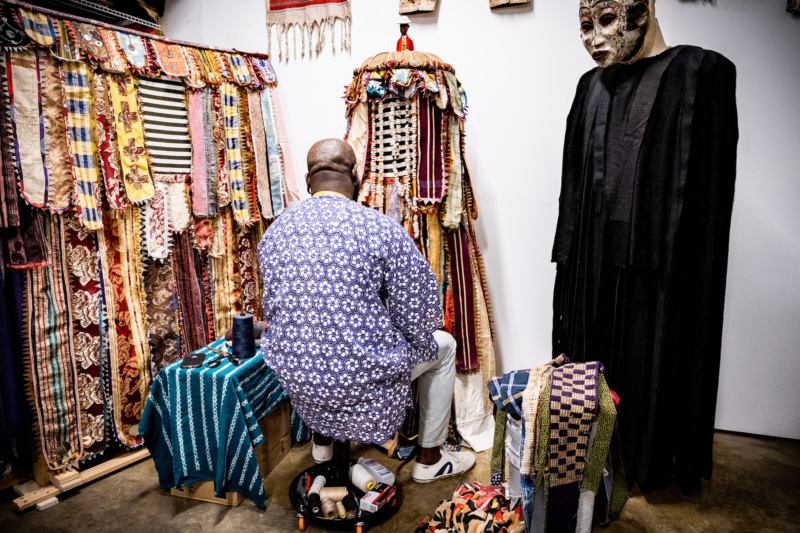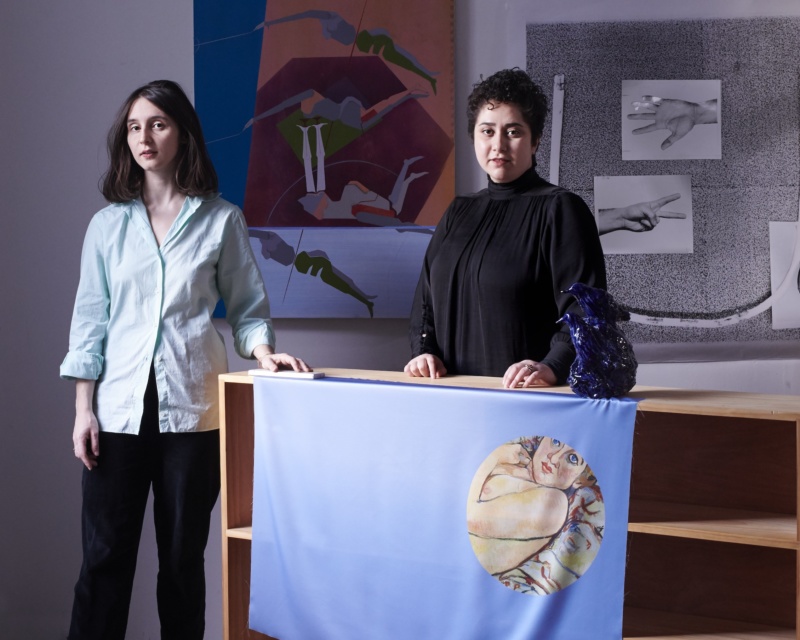
By now, you have surely heard of The Shed. Opening today, the massive new addition to New York’s cultural landscape has almost met a fundraising goal of more than half-a-billion dollars. The multi-disciplinary arts center has pride of place in Hudson Yards, the biggest real estate development in US history by value (so says developer Stephen Ross, whose Related Companies is behind it), on the far west side of Manhattan. Its adjustable structure—which moves to cover or uncover a plaza—was designed by the Diller Scofidio + Renfro studio as lead architect and the Rockwell Group as collaborating architect, and it will keep Instagrammers busy for years.
The Shed has sizeable ambitions, as evidenced by its opening programming: A concert series conceived and curated by filmmaker Steve McQueen, a concert by legendary musician Björk, plus an immersive live performance with painter Gerhard Richter alongside music by Steve Reich and Arvo Pärt. Later in the year, look for a kung-fu musical directed by Chen Shi-Zheng and an exhibition of works by conceptual artist Agnes Denes.
Arts institutions have been fully embracing multi-disciplinary programming for a while now, a trend that continues with the diverse lineup for this year’s edition of the Whitney Biennial, but generally such presentations have required retrofitting performance into institutions originally designed to hold visual arts. Rarely has there been a purpose- built venue for everything at once. “We’re not siloed into one artistic practice,” says The Shed’s director, Alex Poots, who has spent the last couple of years ramping up for the big opening.
The other point of difference for The Shed is that, alongside the massive names like Richter and Björk, the center is committed to discovering new talent—even artists who have never had a big show and aren’t yet represented by a gallery. “We’re as interested in very established artists as we are in early-career people who are just starting out, and the two complement each other,” says Poots. He adds, “I haven’t been to an arts center that does both.”
The exhibition “Open Call,” opening May 30 and continuing through the summer and into the 2020 season, features 52 emerging artists and collectives based in New York City. All participants were commissioned to create new work, and all received a stipend between $7,000 and $15,000. The multidisciplinary artist Kiyan Williams, for instance, will use dirt donated by the city’s parks department to create a site-specific wall work addressing gentrification and diaspora.
The Shed convened six different panels of outside experts to find the talent for “Open Call.” According to Tamara McCaw, the chief civic program officer, “We’re always thinking about what it means to be a civic institution, and located on city-owned land”—in other words, The Shed has taken on the responsibility of representing all of New York.
Senior curator Emma Enderby points out that the exhibition will be a noteworthy complement to the concurrent Biennial, with its more- established artists like Nicole Eisenman and Brendan Fernandes. “Our approach is completely grassroots,” she adds, noting that they did everything from post on LinkedIn to contact the Asian American Arts Alliance to tap into unheralded talent.


Their show will feature six to seven creators, including themselves, the late Surrealist legend Dorothea Tanning and the multimedia artist A.L. Steiner, but it will be enclosed with transparent walls, keeping it separate but also connected to the rest of “Open Call.”
The inspiration for the presentation is the work of 19th-century artist Suzanne Valadon (1865–1938), who was also a model for Degas and Matisse. You’ve seen her before: She’s the smiling female dancer in Renoir’s famous Dance at Bougival, in the collection of the Museum of Fine Arts, Boston. After her days as an Impressionist muse, she embarked on a 40-year painting career, and was also the mother of the painter Maurice Utrillo.
“We were inspired by one reclining nude in particular,” says d’Heurle of a Valadon canvas at the Met, where only a small percentage of the art on display is by women. “She shifted the expectations for a woman, and it got us thinking about the representation of women’s bodies.” Examinations of voyeurism and the male gaze are front and center here. D’Heurle adds, “As a painter who was once a model, she made a huge leap.”
D’Heurle has primarily worked with photography, and Hoseini with painting. The two met at Bard in 2014 and have been happily collaborating for three years. If their “Open Call” exhibition illustrates anything, it’s that The Shed is being set up to reflect a new kind of prismatic discourse that doesn’t rely on the same old traditions. “We feel like as artists, we’re always in discussion about everything we see around us,” says Hoseini. “And this show reflects that.”
Pictured left: “Open Call” Participants, with Shed Staff. Top Row, L to R: Avram Finkelstein, Troy Michie, Gabriela María Corretjer-Contreras, Richard Sears, Asif Mian, Phoebe d’Heurle, Onyedika Chuke, Emma Enderby (The Shed), Mohammad (Saint Abdullah), Tamara McCaw (The Shed), Julia Weist, Jesse Bandler Firestone (The Shed), Kyle Marshall, Alessandra Gomez (The Shed), Kiyan Williams, Art Domantay (The Shed), Justin Allen, Hugh Hayden, Rachika Samarth, Maya Lee-Parritz, Tahir Carl Karmali. Middle Row, L to R: Mehdi (Saint Abdullah), Tariq Al-Sabir, Christopher Udemezue (Neon Christina), Farzin Lotfi-Jam, Thanushka Yakupitiyage, Caitlin Blanchfield, Maia Chao, Moko Fukuyama, Nia O. Witherspoon, Analisa Teachworth. Seated On Floor, L to R: nicHi douglas, Fana Fraser, Monstah Black (The Illustrious Blacks), Haley Elizabeth Anderson, Harold “Fyütch” Simmons, Farideh Sakhaeifar.










 in your life?
in your life?

